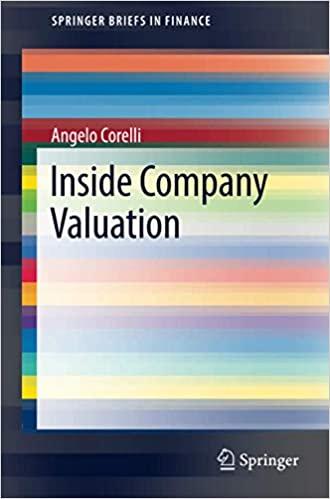The firm needs to buy and install an auxiliary boiler and a flue gas desulphurization unit that will operate in tandem with their existing boilers. The FGDU is needed to clean the contaminants from the flue gas that is created from burning this lower grade fuel. A chemical reagent is used to separate the contaminants and then later disposed in a landfill The installed cost of the auxiliary boiler (and the retrofit to the burners in the existing units) is $1.1 million and $2.8 million for the FGDU. The unit will also require a computerized control system that will cost an additional $172,000. (Installed) The President expects fuel savings of $i,450,000 for the first year and to increase two percent per year (2%) for each year thereafter. For the first year of operation, the chemical reagent will cost of $220,000 per year and annual maintenance and disposal of flue gas particulates will be an additional $85,000 and $75,000 respectively. These costs are expected to increase by 3 percent (3%) per year (after the first year) to the end of the useful life of the asset, which is expected to be 10 years. At the end of 10 years, the unit will have a salvage value of $100,000. (The salvage value is net of any dismantling costs) The boiler comes under class 43, which has a CCA rate of 30 percent. The computerized control system comes under Class 50, which has a CCA rate of 55 percent. The President wants you to use the half-year rule. (50 percent rule) The firm's marginal tax rate is 27 percent and the firm's discount rate (MARR) is 8 percent. The firm will need $1,000,000 for initial inventory (working capital) but does not expect to recoup any of this money at the end of the project. The Auxiliary boiler together with the FGDU qualifies for a $50,000 ITC and will be realized in the first year's cash flow. (Year 1) For this project, the firm will borrow $600,000 at 3.5 percent compounded annually for 10 years and the bank has agreed to accept payments at the end of each year 2) A Table showing the amortization schedule of the loan over the 10-year period. (5 marks) 3) A Table showing the Capital Cost Allowance and Undepreciated Capital Cost Allowance for the auxiliary boiler, FGDU and the retrofit of existing burners and another Table for the computerized control system over the 10 year period (4 marks) The firm needs to buy and install an auxiliary boiler and a flue gas desulphurization unit that will operate in tandem with their existing boilers. The FGDU is needed to clean the contaminants from the flue gas that is created from burning this lower grade fuel. A chemical reagent is used to separate the contaminants and then later disposed in a landfill The installed cost of the auxiliary boiler (and the retrofit to the burners in the existing units) is $1.1 million and $2.8 million for the FGDU. The unit will also require a computerized control system that will cost an additional $172,000. (Installed) The President expects fuel savings of $i,450,000 for the first year and to increase two percent per year (2%) for each year thereafter. For the first year of operation, the chemical reagent will cost of $220,000 per year and annual maintenance and disposal of flue gas particulates will be an additional $85,000 and $75,000 respectively. These costs are expected to increase by 3 percent (3%) per year (after the first year) to the end of the useful life of the asset, which is expected to be 10 years. At the end of 10 years, the unit will have a salvage value of $100,000. (The salvage value is net of any dismantling costs) The boiler comes under class 43, which has a CCA rate of 30 percent. The computerized control system comes under Class 50, which has a CCA rate of 55 percent. The President wants you to use the half-year rule. (50 percent rule) The firm's marginal tax rate is 27 percent and the firm's discount rate (MARR) is 8 percent. The firm will need $1,000,000 for initial inventory (working capital) but does not expect to recoup any of this money at the end of the project. The Auxiliary boiler together with the FGDU qualifies for a $50,000 ITC and will be realized in the first year's cash flow. (Year 1) For this project, the firm will borrow $600,000 at 3.5 percent compounded annually for 10 years and the bank has agreed to accept payments at the end of each year 2) A Table showing the amortization schedule of the loan over the 10-year period. (5 marks) 3) A Table showing the Capital Cost Allowance and Undepreciated Capital Cost Allowance for the auxiliary boiler, FGDU and the retrofit of existing burners and another Table for the computerized control system over the 10 year period (4 marks)









